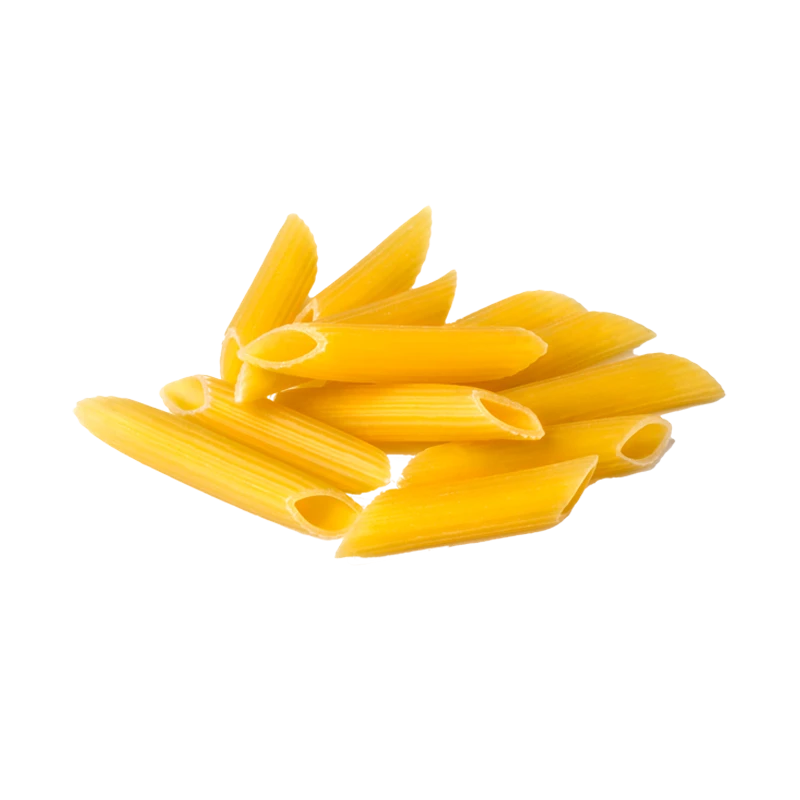Pasta — Nutrients, Health Benefits, And Shopping Tips

Written by Listonic Team
Last update on September 5, 2024
Pasta nutrients
Nutrition facts
Amount per 100 g
Calories
🔥 131 kcal
| Nutrition per: 100 g | Value | % Daily Value* |
|---|---|---|
| Carbs | 25 g | 9.09% |
| Fiber | 1 g | 3.57% |
| Sugars | 1 g | 2% |
| Glycemic Index | 45 | - |
| Protein | 5 g | 10% |
| Sodium | 6 mg | 0.26% |
| Total Fat | 1 g | 1.28% |
*The % of Daily Value (DV) tells you how much a nutrient in a serving of food contributes to a daily diet. 2,000 calories a day is used for general nutrition advice.
45
🟢 Low Glycemic Index
1 g
🥕 Low Fat Content
Pasta facts & tips
Health benefits
- Provides carbohydrates, which are a primary source of energy for the body and brain.
- Rich in essential vitamins and minerals if made from enriched flour, such as B vitamins and iron.
- Can be a source of fiber if made from whole grains, promoting digestive health.
- Versatile and easy to prepare, making it a staple in many healthy diets.
Health risks
- High carbohydrate content particularly in pasta made from refined white flour, which can cause rapid spikes in blood sugar levels, particularly concerning for diabetics.
- Low nutrient density as refined pasta offers limited vitamins and minerals compared to whole grain options.
- Potential for overconsumption due to its palatable nature, leading to excessive calorie intake if not mindful of portion sizes.
- Gluten content making it unsuitable for individuals with celiac disease or gluten sensitivity, potentially causing digestive discomfort and other health issues.
How to choose pasta
Good quality pasta should be uniform in color and have a firm texture. It should be free of any cracks or irregularities, ensuring it holds up during cooking. The pasta should cook to an al dente texture, maintaining a slight chewiness.
Avoid pasta that is overly brittle or has a dusty appearance, as this can indicate it has been stored improperly. Pasta that becomes mushy when cooked should also be avoided, as it is likely of low quality.

How to store pasta
Dry pasta should be stored in a cool, dry place, preferably in an airtight container. A pantry or cupboard is ideal to maintain its quality. Properly stored, dry pasta can last for up to two years.
Moisture exposure can cause dry pasta to become moldy. Avoid storing it in open containers or near strong-smelling foods, which can alter its taste. Always keep the container tightly sealed to ensure the pasta remains fresh and free from pests. Proper storage ensures it retains its optimal cooking properties.
✅ Extra Tip
How long does it last?
Pasta can last for 1-2 years when stored in an airtight container in a cool, dry place. Once cooked, pasta should be consumed within 3-5 days if kept in the refrigerator.
What to do with leftovers?
Leftover pasta can be used in a variety of quick and easy dishes. Toss it with olive oil, garlic, and Parmesan for a simple meal, or mix it into a pasta salad with fresh vegetables, herbs, and a tangy dressing. Pasta is also great when added to soups or casseroles, where it adds heartiness and texture.
Use leftover pasta to make a baked pasta dish by layering it with sauce, cheese, and any leftover meats or vegetables, then baking until bubbly and golden. If you have a lot of pasta, consider making a batch of pasta fritters by mixing the pasta with eggs, cheese, and herbs, then frying until crispy. Pasta can also be used in a frittata with eggs and cheese, or tossed with a creamy sauce for a comforting meal. For a quick snack, reheat pasta and serve it with butter and grated cheese, or toss it with pesto for a flavorful dish.
👨⚕️️ Medical disclaimer
Discover products from other categories
Listonic Team
Fact-checked
Our editorial team checked this article to make sure it was accurate at the time of publishing it.
Get the top-rated shopping list app on your phone!







